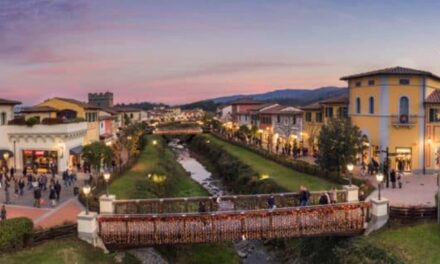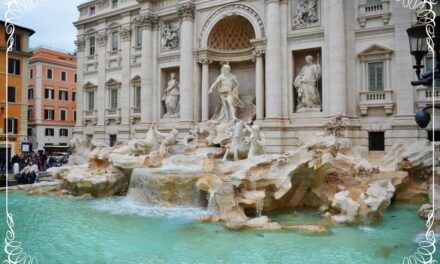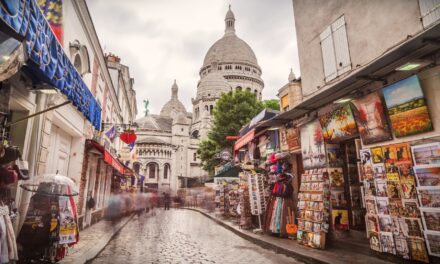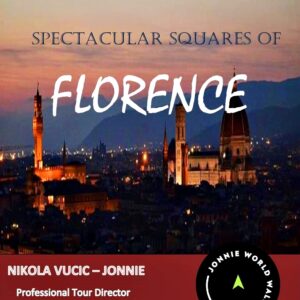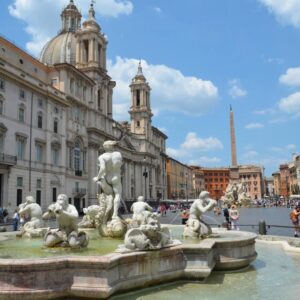PIAZZA NAVONA – beyond noble and artistic spirit
“Every step on Navona Square is measured through comprehension of its artistic value and historical background while masterpieces of Bernini and Borromini stand out and speak for themselves…”
Good old squares, eternal dynamic hubs, artistic and noble spaces in every city are trying to absorb you as much as possible by demonstrating their character. Can you imagine more powerful feeling, than embracing the world of intriguing Italian squares.

Piazza (square) Navona with colors and charm
Rome, as a proud capital, offers its piazzas to be discovered, while letting their corners and stones to speak for themselves. Surpassing all aristocratic features, loaded with history and creative energy of the greatest artistic minds, one square in Rome, stands firmly as an elegant masterpiece – Piazza Navona.
NAVONA SQUARE treasures
First sight of its elliptic shape recalls large, ancient stadium, which existed on the very same spot where Navona Square is today. It was built during the reign of Emperor Domitian, who started athletic events, musical performances and even horse chariot races around 86 AD. There was no blood, no trace of gladiatorial fights, or glorious pagan temples like Pantheon. This was the venue for athletes and musicians, who used to enter the stadium through gate, which is partly preserved, beneath the square. This archeological section offers very true insight into the ancient world.
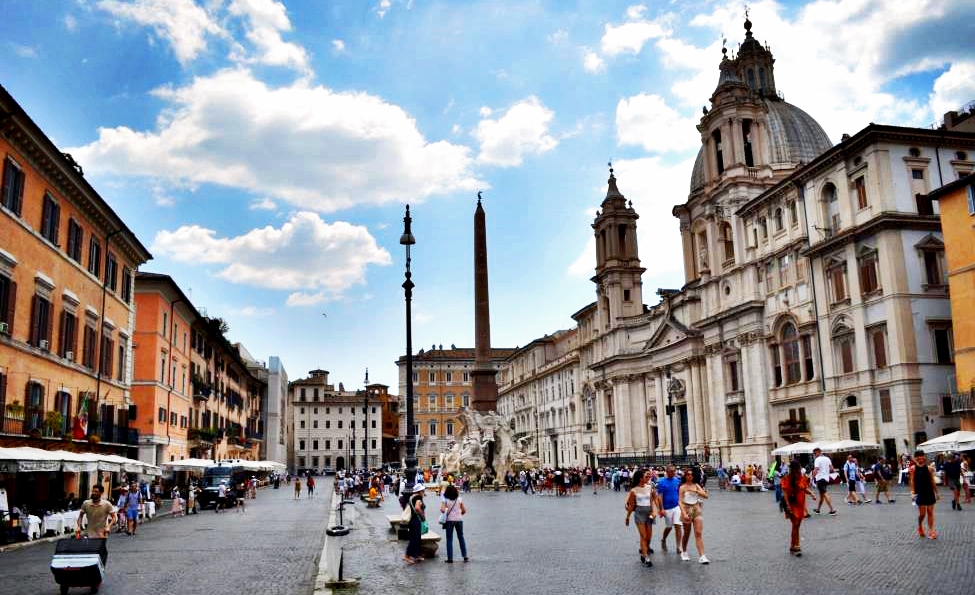
Navona square, Rome
Visitors are so excited, surprised and overwhelmed on Navona Square. They cannot decide where to look first, while patchwork of architectural and sculptural masterpieces begin to dominate. Monumental, Baroque jewel, Sant Agnese in Agona church, with its elegant dome, is like a real guardian of this square. In fact, it tells us sad story on how young Christian lady-martyr Agnes, was brutally killed by the Romans. Her deep faith, pride and sacrifice for the sake of Christianity were above everything. Agnes’s agony (Agona) and heroism were marked forever in 1653. Project for the new church started, conducted by famous Francesco Borromini. He was an architect who lived for Baroque, making this magnificent shrine so acoustic, that listening to a choir singing in a church is being a step closer to heavens.
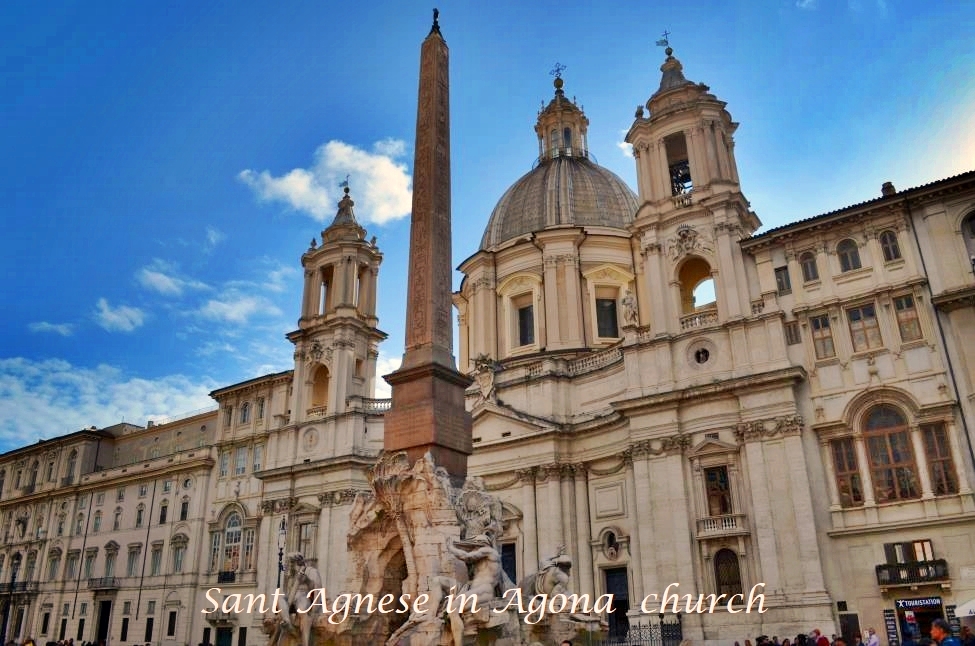
Church of Sant Agnese in Agona (St. Agnes in agony)
Video: Interior of the Church of Sant Agnese in Agona
Walk inside, and opulent, flying Baroque will be everywhere. Surprising lack of paintings is brilliantly compensated by marble bas reliefs. They occupy sides of the octagonal base, which hides real, Greek Cross layout of this church. Angels and saints are almost addressing to us from every church altar. How passionately they were sculpted, by the students of Gian Lorenzo Bernini, while dome fresco of Apotheosis of St.Agnes into the Glory of Heaven, fascinates in every way. Who could finance this unique mosaic of highly expensive materials? Well, having noble and powerful Pamphilj family behind a project was really something. In the XVII century, Giovanni Battista Pamphilj became Pontifex Maximus (The Pope), reigning eleven years with strong political influence and artistic patronage. His Pamphilj Palace is still on Navona Square in Rome, attached to the church of St. Agnes, with interior bursting with luxury and former papal prestige.

St. Agnes’s Church interior decoration, Piazza Navona
Now days, this palace is home to Brasilian Embassy, while formerly, it was perfect loving nest for the Pope Innocent X and his sister in law/mistress Olimpia Maidalchini. Instead of XVII century gossips, let’s explore more of Piazza Navona. Picturesque sense of the square is clearly marked by ochre, pale, orange, reddish or yellow facades of the palaces. Their ground floors are like a palette of noble style life: fancy old cafes, bars and well known Tre Scalini Restaurant. It used to be one of the favorite dining venues for controversial Italian ex-prime minister, Silvio Berlusconi. Paying 15$ for a beer will maybe disappoint you, but always be aware, you are enjoying privilege of an open air museum square, one of a kind. “If you didn’t have a coffee on Piazza Navona, is like you did not visit Rome at all”. This sounds pretty much judgmental, for a true explorer. Coffee is “brutally” good here, but year after year, even most traditional bars and restaurants slowly loose its charm. It seems they rush for every dollar and turn its business towards commercialized world.
Magical world of fountains
Real essence of charm comes from three jewels on Piazza Navona – its precious fountains. After iconic Trevi Fountain, those on Piazza Navona are among most beloved fountains in Rome.
1. Moor’s Fountain
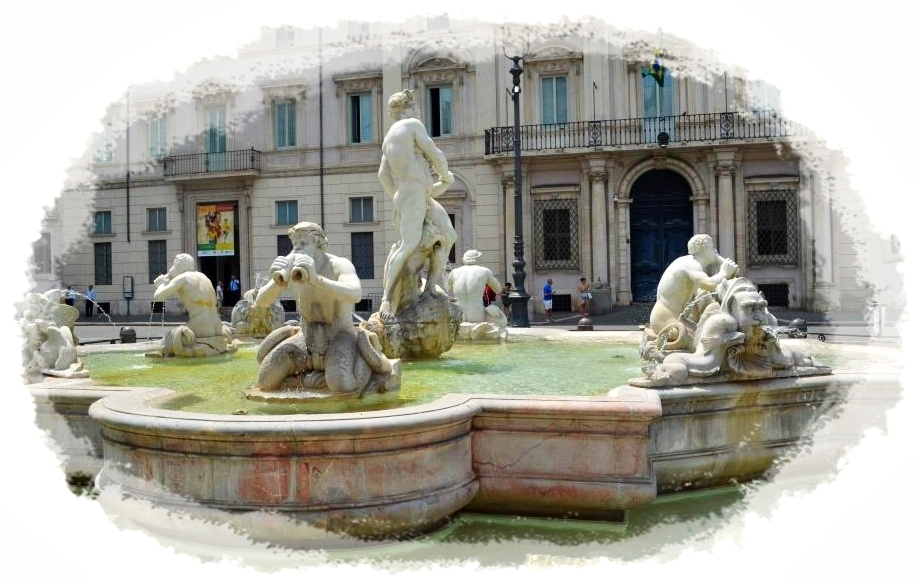
Moor’s Fountain, Piazza Navona
Just in front of Pamhilj Palace, Moor’s Fountain is a perfect combination of late renaissance and baroque style. Original design from 1574. was without the central male figure. It satisfied heraldic symbols of a patron, Pope Gregory XIII, with beautiful tritons and dragons sculpted by Giacomo della Porta. So where did the Moore came from? Gian Lorenzo Bernini made it in 1653., by the wish of another pope. He creates nude, proportioned male statue in a conch shell, holding dolphin’s tale. Face expression recalled moor’s features, so from that moment on, this fountain will be remembered as Fontana del Moro forever.
2. Neptune’s Fountain
On the opposite side of the square, completing decoration symmetry, stands elegant Neptune’s Fountain. XIX century statues of nymphs, cupids, sea horses and Neptune, fighting an octopus, are brilliantly captured in dynamic and playful movement. Statues are patiently waiting for our eyes, to search for more amazing details.
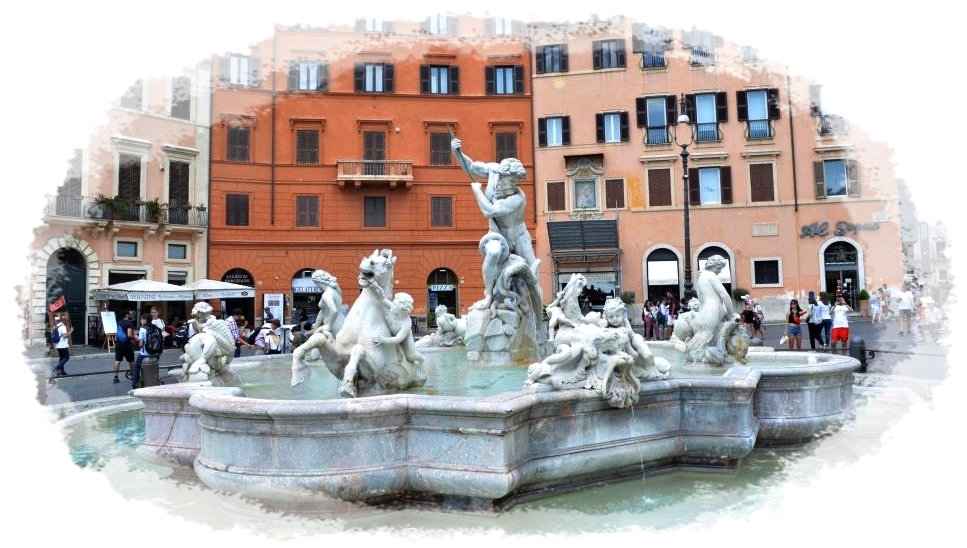
Neptune’s Fountain, Piazza Navona, Rome
3. Fountain of the Four Rivers
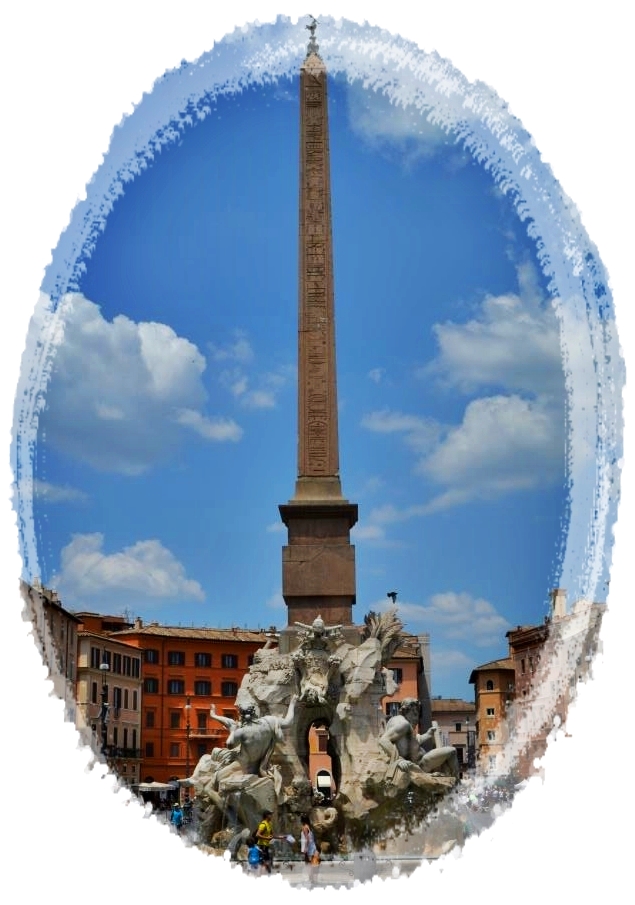
Four Rivers Fountain, Navona Square, Rome
In the middle of Navona Square, perfectly balanced and elegant, stands the Fountain of the Four Rivers. It looks like Bernini used all his divine powers to demonstrate how his Baroque can be light, alive and touching. Blocks of white stone are brilliantly turned into a symbolic play of the four rivers. Ganges represents Asia, La Plata stands for the Americas, Nile for Africa and Danube for Europe. This is how Bernini united four known continents of XVI c.
Recalculating money spent on this large scale project, I came to astonishing 1.3 million dollars. One part of it, around 130.000$, was paid to the architect Gian Lorenzo Bernini. Just think about those amounts in 1651. when fountain was unveiled. Famous artworks were usually financed by the cardinals, noble families, or the Pope, in the best case. Four Rivers Fountain was officially patronized by Pope Urban VIII. In reality, all the money came from an extra tax on bread, introduced by Pope himself! Romans reacted instantly, leaving graffiti while the fountain was still under construction. “We do not need fountains, we need bread”, were the words that clearly explain real life in the 1500s Rome. It was just an endless gap between poor majority and wealthy minority.

La Plata River statue with curious hand gesture, Piazza Navona
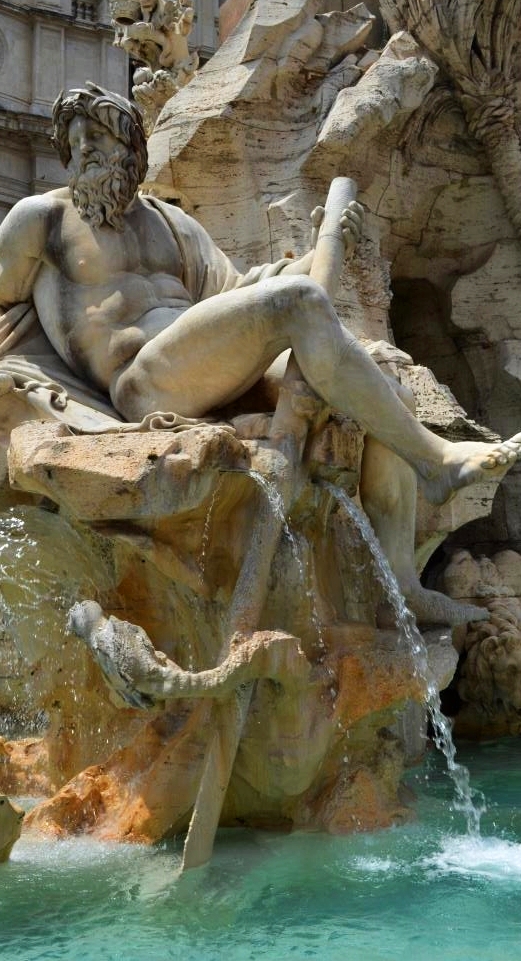
River Ganges statue, Four Rivers Fountain, Navona Square
Out of this fact, everything else was done in a brilliant way. Bernini passionately shaped his allegorical river statues, with special attention to a bearded man, symbolizing The Plate river. His hand is stretched towards St. Agnes’s church in a gesture of protection. Like it announces direct message by Bernini: ”My God, this church is so badly constructed, so it can crumble any second”.
Is this a pure sign of rivalry between Bernini and Borromini (who designed a church), maybe we will never know. Nevertheless, anatomy of human bodies, their motion and expression, whiteness of stone, sound of water and old obelisk full of hieroglyphs, proves that in Bernini’s imagination, Baroque and ancient Egyptian heritage can walk hand in hand.
Four Rivers Fountain stays our precious witness of centuries of history, everyday life and festivities on Piazza Navona.
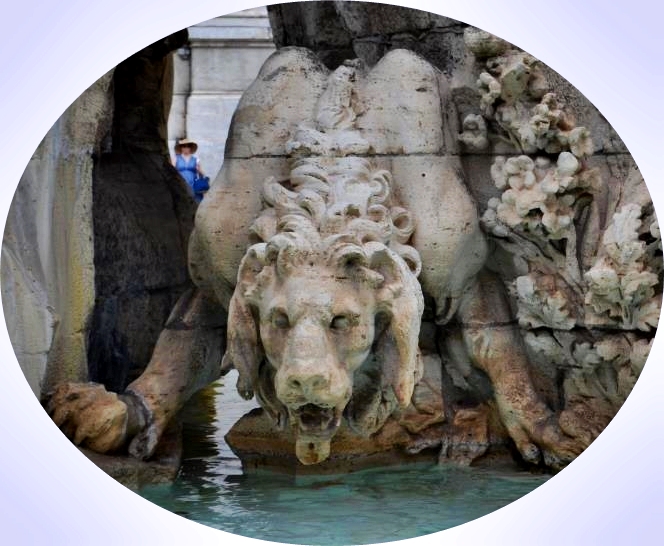
Four Rivers Fountain detail, Piazza Navona
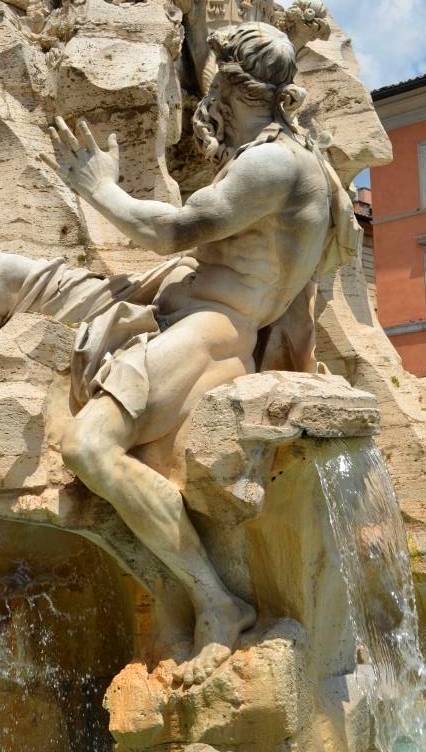
Danube River statue, Piazza Navona
In the XVI century, during hot months of July and August, people would close fountain’s shafts, letting the entire square to be flooded. That is how Romans rushed for refreshment, while rich nobles, overloking that muddy mess from their balconies, would throw a bunch of golden coins into the water. They enjoyed watching a sad struggle for a better tomorrow by the poor, trying to find a coin or two in the waters of Piazza Navona.
Today, Piazza Navona in Rome is something to respect. It is shining, vibrant square on a sunny day, mystic and charming when lit up in the evening, and a glittering princess during Christmas time. Some think of it, as a perfect stage for a pinch of intriguing scenes from the movie Angels and Demons.
Just come, explore and feel Navona Square in your own way. Find those tiny, hidden details around you. Maybe they will tell you even more authentic story than this one. Because Piazza Navona speaks for itself, thousands of tales from a square of a lifetime!
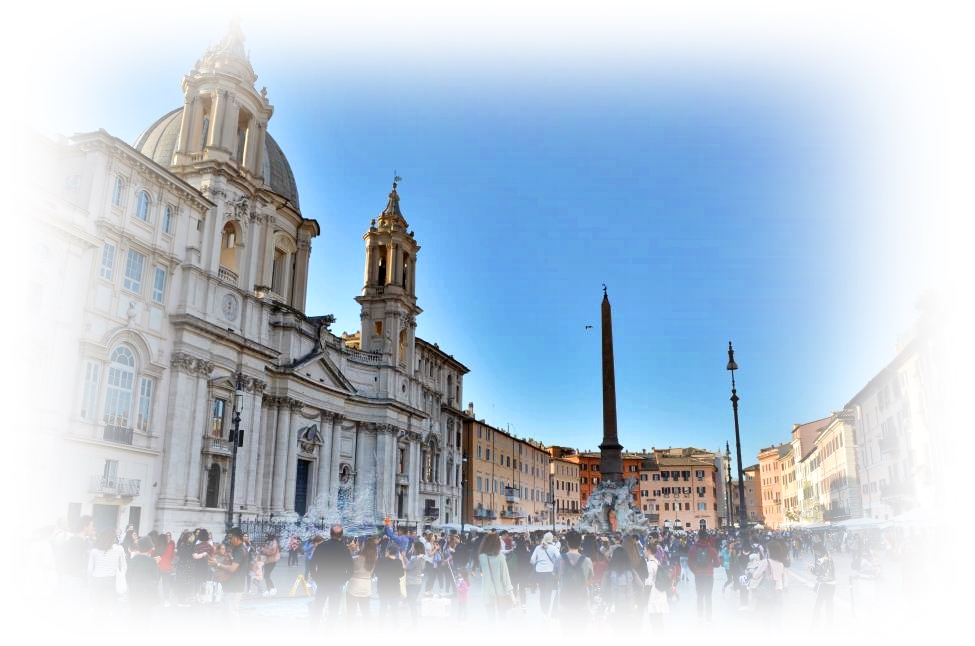
Notice: article images are made by Jonnie World Walker team.
Ready to explore more?
♣
Even in this crazy time for tourism, Piazza Navona presented truly spectacular light show for the quiet, 2020. Christmas, celebrated just next to the iconic Four Rivers Fountain.
Video by Stampa Italiana
♣
One of the last universally talented artists, Gian Lorenzo Bernini deserves a biography that transfers all his passion and devotion to every reader. This is a book about “his life and his Rome”.
Photo by amazon.com

